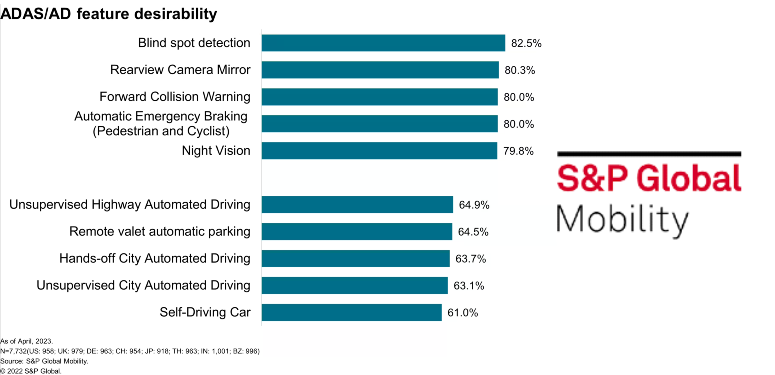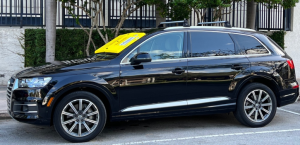Toronto, Ontario — A new report suggests that, while the driving public has grown more comfortable with vehicle ADAS features, that trust appears to hinge on whether the words “self-driving” appear anywhere near the technology.
S&P Global Mobility’s most recent consumer survey has uncovered that many drivers do wish to see, and often expect, features like blind spot detection, automatic emergency braking (AEB), forward collision warning and rear mirror cameras on their new vehicles.
Self-driving and automated parking systems, on the other hand, recorded lower desirability ratings, which an analyst from the automotive data firm attributed to the “two different ballparks of interest”, when it comes to safety versus convenience features.
The report found blind spot detection to be the most desired ADAS feature at 82.5 percent while self-driving cars were found to be the least desired at 61 percent.
The general level of public exposure to conventional ADAS features and convenience-focused self-driving systems appears to fueling this disparity in desirability, according to the report, as about 50 percent of respondents said that their vehicle is equipped with some form of ADAS functionality, while hands-free self-driving features occupy a far smaller percentage of the Canadian car parc.
“There is a gap in experience and exposure to those systems. We’re just now starting to see (hands-off systems) move outside of the premium models, but that’s a process,” said senior technical research analyst Brock Walquist.
As it stands, the general public remains unconvinced that self-driving will offer them an improved driving experience, with 53 percent feeling that an autonomous vehicle (AV) would drive more efficiently than a conventional vehicle, 48 percent believing the AV experience to be safer and only 27 percent with a desire to use an AV to eliminate the tedium of driving.
“The whole idea of a system that takes control from the driver continues to not sit well with consumers,” said Walquist.
The report points out that this sentiment is highly regional, however, as mainland China was found to have the strongest desire for self-driving technology, while the U.K., the U.S. and Germany recorded the lowest rates of desirability.
Regarding the cost of these advanced driving systems, the report found that 81 percent of consumers would be willing to pay more for vehicles with higher safety ratings, however, 50 percent believe basic ADAS functions should come standard on all new vehicles.
“Consumers have an expectation that safety equipment should just be a part of every vehicle produced and sold,” said lead analyst for autonomy at S&P Global Mobility Jeremy Carlson.
“They’ll ask themselves, ‘If it’s a critical safety technology, why are you asking me to pay for it on top of my vehicle purchase?'”





































